A desert is a dry and sandy stretch of land and covers 20% to 30% of the total land surface on Earth, and typically receives 10 inches or less of precipitation per year. But what about desert soil–what’s it like? Is it fertile?
Desert soil forms in dry, sandy areas where the demand for water from plants is much greater than the supply of water in the area. Deserts receive an average of less than 10 inches of precipitation annually . Most desert soil is dry soil, also known as Aridisols.
Due to the lack of moisture in the soil, there is much less chance of minerals being leached out of the soil.
In addition, the soil is responsible for many of the colorful rock formations found in many of the deserts around the world, as well as forming a rock-like surface just below the soil surface.
Find out the soil type in the rainforest.
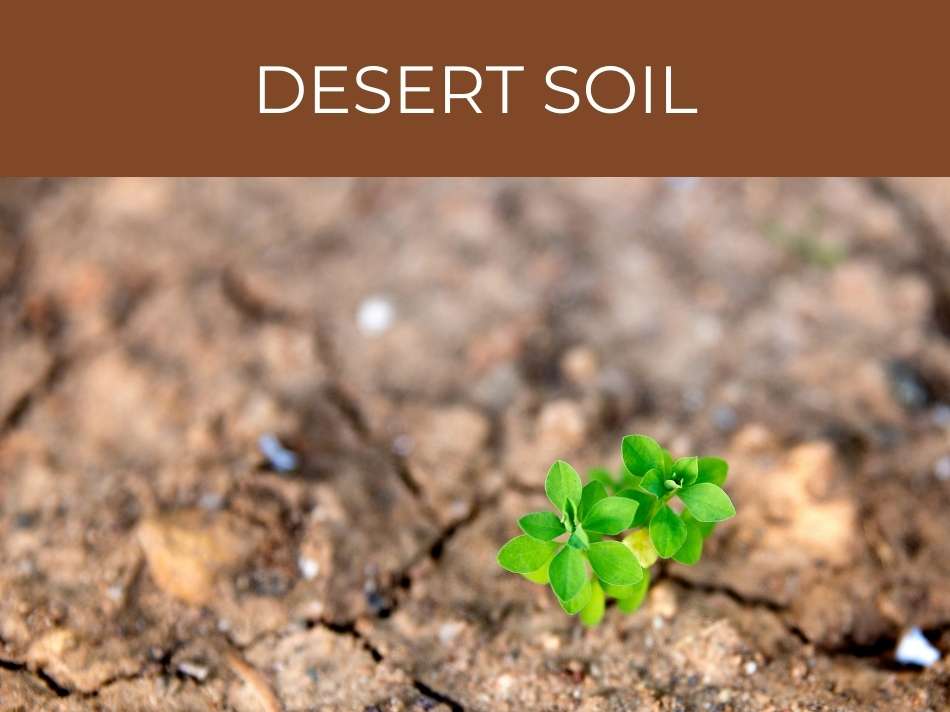
Desert soil
Most desert soil, due to its composition, is infertile soil.
While the desert may be considered a very dry place, there are many living organisms in desert soil.
And, of the two types of desert soils, Aridisols is the most fertile soil, but is unable to sustain life as there isn’t sufficient rainfall in these areas to sustain life.
Desert soil forms in arid climates and is usually light in color, varying from gray, brick red, tan, or brown. The soil in the desert often varies and may be covered with desert pavement, it may be salty, shallow or deep, or it may have crust/cement horizons near the surface of the soil.
These areas receive less than 10 inches of rain per year and the evaporation in desert areas is often more than 5 times that of the actual rainfall (precipitation).
The moisture level is often very low but these areas are also prone to flash flooding when rain does eventually come.
Desert soil is often very dry and, with the exception of some plants, does not support vegetation.
There are plants that live in these areas that are extremely well-adapted to low moisture levels in the soil, such as cacti and shrubs.
Find out whether plants need soil.
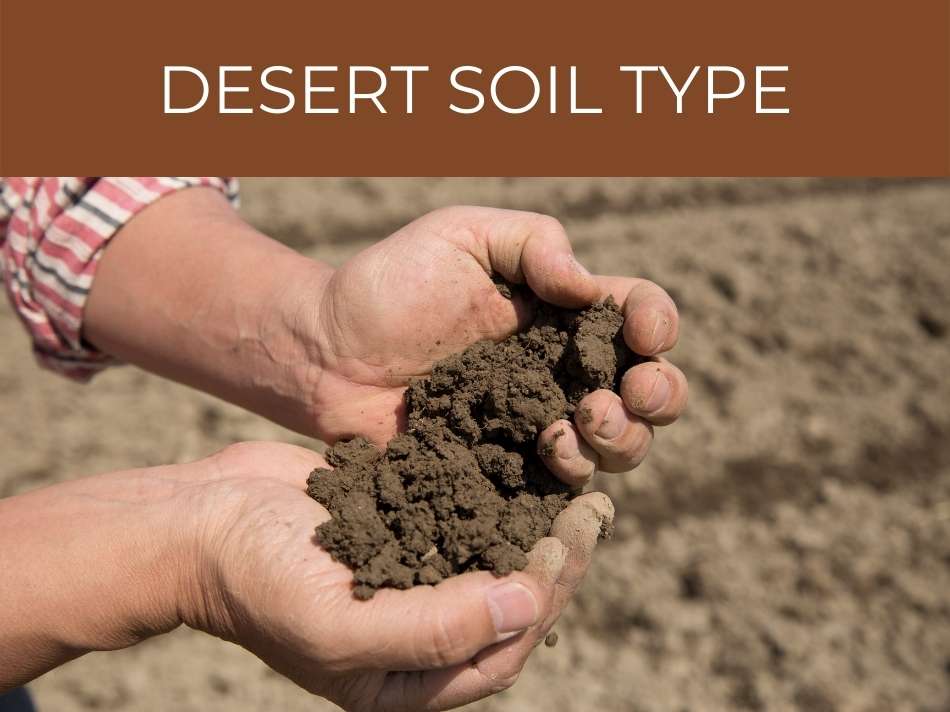
Desert soil type
There are different types of desert and, as such, the soil in the desert varies immensely in texture.
However, most of the soil found in the desert is sandy, roughly 90% to 95% to be exact.
There are 2 types of soil in the desert; Aridisols and Entisols. Entisols soil is younger & develops over rocky plateaus, sand dunes, or gravel plains. Aridosols cover up to 1/5 of the Earth’s surface. Certain desert areas are much drier than others, such as the Sahara and the Australian outback.
Desert soil is comprised of low levels of nitrogen as well as organic matter.
On the other hand, the phosphate and calcium carbonate levels in desert soil are extremely high.
This makes desert soil very infertile. In addition, the lower layers have much higher levels of calcium than the upper layers of the soil.

What is the soil like in the desert
The soil in the desert is unlike any other soil found on earth.
The soil can be divided into two categories; Argilic, soil with a clay horizon, or Argids, soil without a clay horizon.
The soil in the desert is sandy, thin, & rocky, & the particles in desert sand are large and coarse. In addition, the sand does not clump or stick together due to low clay content. Desert soil is devoid of many of the organic matter found in other soils, so its color is usually lighter.
Keep in mind that there are four types of deserts and not all deserts are dry and hot.
Find out whether soil is living.
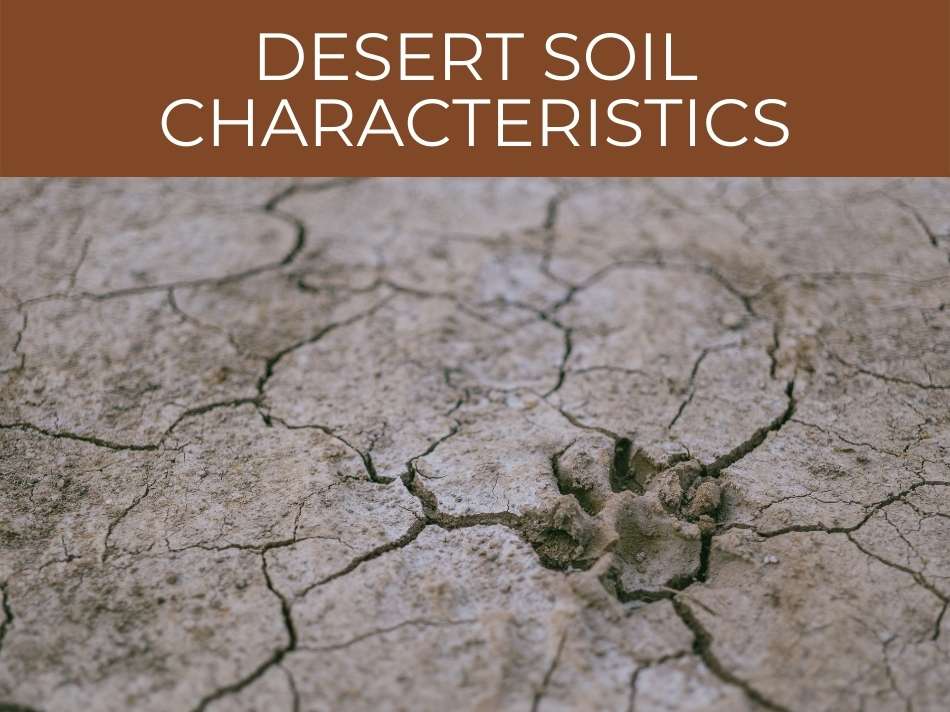
Desert soil characteristics
Hot deserts are defined by their extreme climates and challenging environment.
The characteristics of desert soil are unique to the environment the soil is found in.
Desert soil is very dry & usually gray or tan colored, thin, sandy, & rocky. A lack of rainfall may make the surface of desert soil appear crusty. Evaporation draws moisture to the surface, leaving a layer of salt on the surface of the soil.
The characteristics of desert soil are defined by the fact that these areas often experience less than 10 inches (250 mm) of rain each year.
The conditions are so extreme, that few species and organisms are able to survive in the harsh climate.
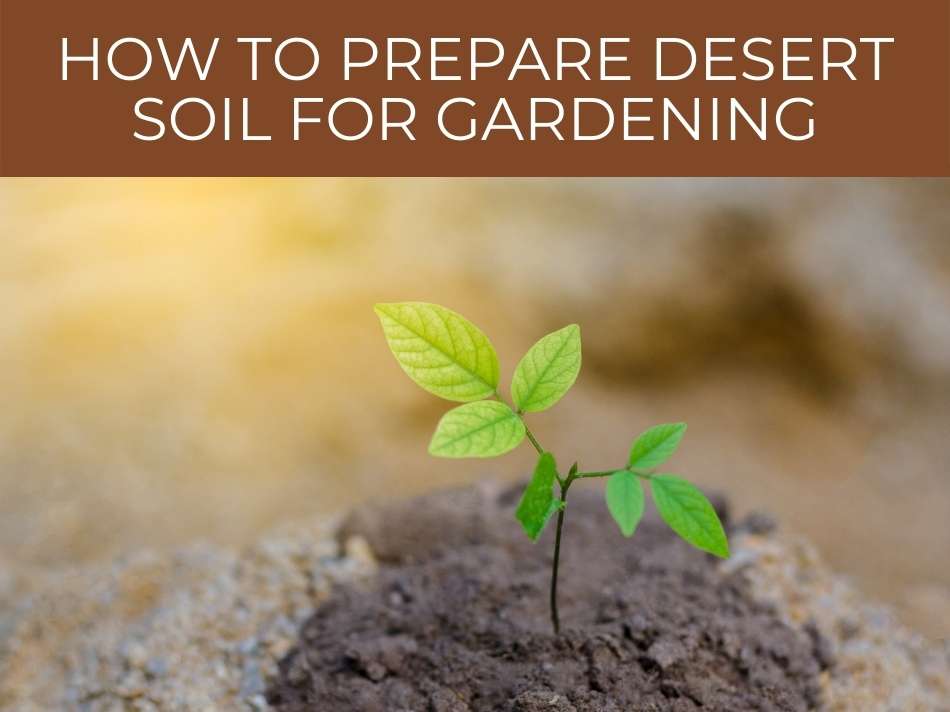
How to prepare desert soil for gardening
Desert soil can be treated in order to become healthy soil.
The USDA Sustainable Agriculture Research and Education Department defines healthy soil as soil that accommodates beneficial organisms, has high levels of residue, nutrients, and decomposed organic matter, with low levels of toxic compounds, has a porous surface, and good tilth.
To improve desert soil, add compost & organic matter, allow leaves to fall on the desert soil as these act as natural fertilizers. Add 2 inches of mulch to the soil, which will retain moisture & prevent weeds from germinating. Add a nutrient-rich compost further boosts soil fertility.
Desert soil, like the type found in Arizona, can be treated to become fertile.
Some desert plants, like aloe vera, can suffer root rot if their soil is soggy.
This type of soil may require more hands-on maintenance, but with the right ingredients, the soil can become fertile enough for plants, other than desert plants, to grow.
See which is the best soil for houseplants.
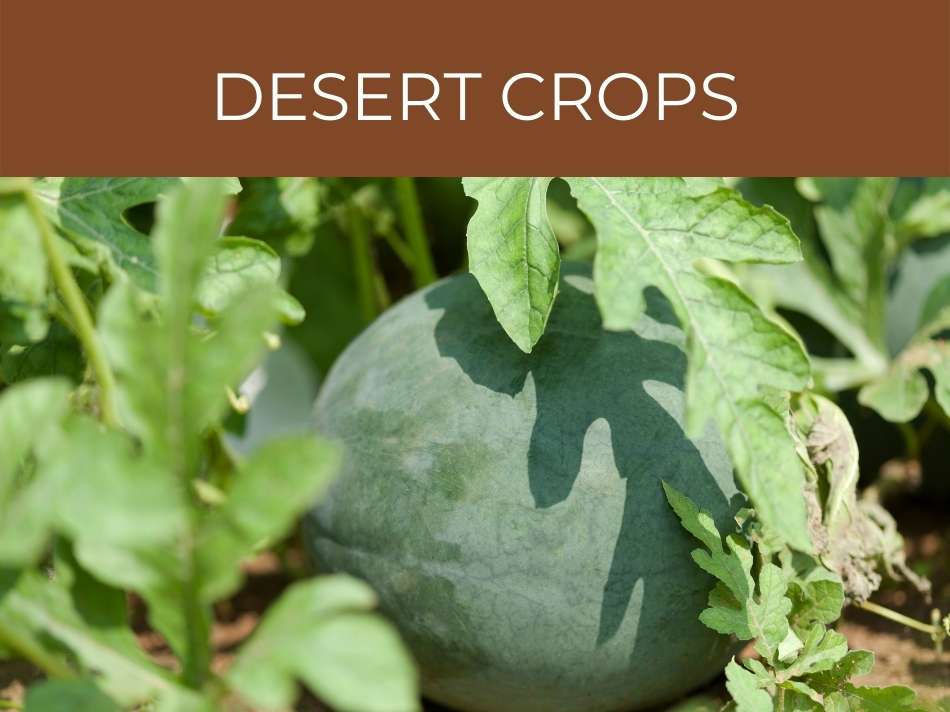
Desert crops
Desert farming has been practiced for thousands of years.
There are several types of crops that are grown in the desert, including watermelons, carrots, apples, radishes, hot peppers, melon, corn, cucumbers, etc.
Desert crops, also known as desert farming, entails the development of agriculture in deserts. This may be very challenging due to irrigation and water supply. Crops grown in deserts include cotton, alfalfa, root vegetables.
This type of agriculture creates quite a unique set of challenges for farmers who depend on irrigation and water supply in order to keep crops alive and thriving.
Drip irrigation, desalination, and water reuse are methods of overcoming challenges related to irrigation and water supply in arid areas.
See our recommendations for the best soil for indoor herbs.
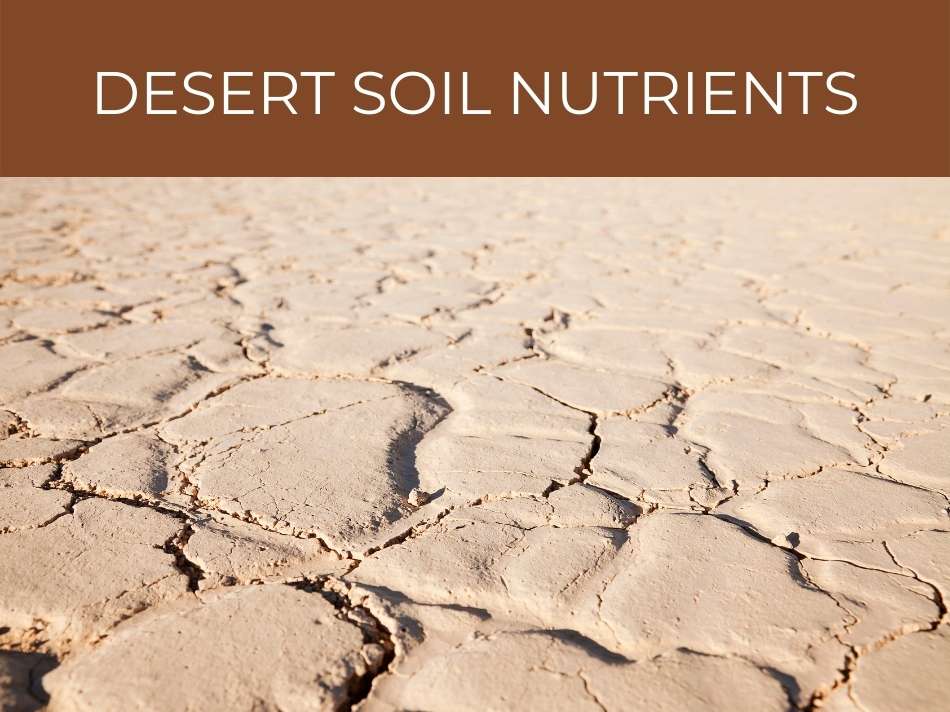
Desert soil nutrients
As previously stated, desert soil can be very fertile and fruitful when there is an adequate water supply.
The nutrients that can be found in desert soil are obtained from a variety of methods.
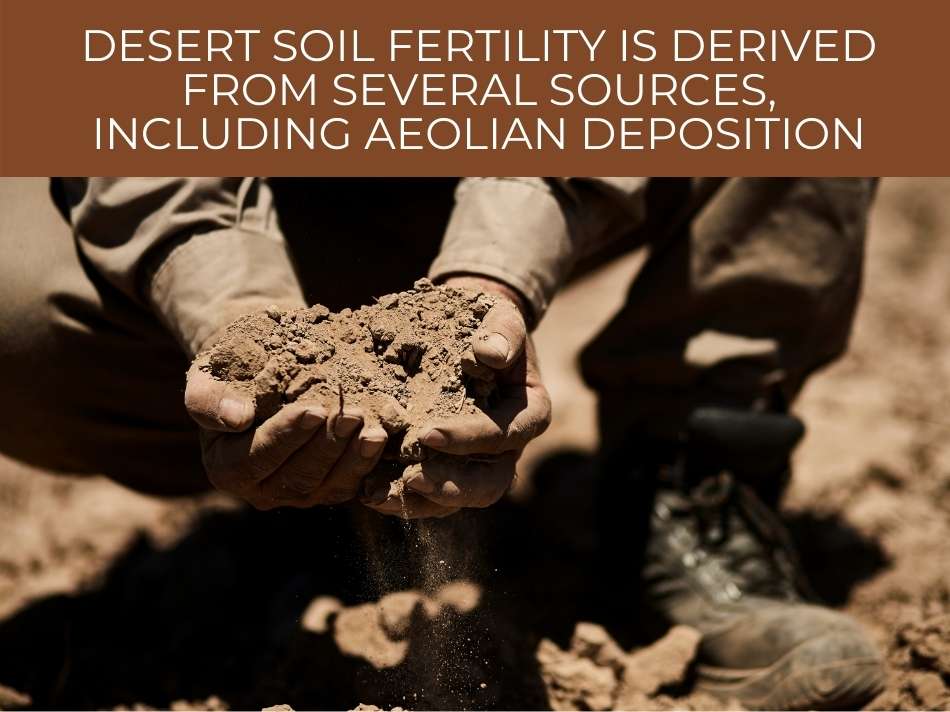
Desert soil fertility is derived from several sources, including aeolian deposition, on-site C and N biotic fixation, as well as parent material weathering. Organic matter is lacking in desert soils, resulting in higher pH (7-8 pH), which makes nutrients less available to plants..
In addition, parent material is responsible for much of the nutrients that can be found in desert soil as well.
Find out if cooking oil is bad for your soil.
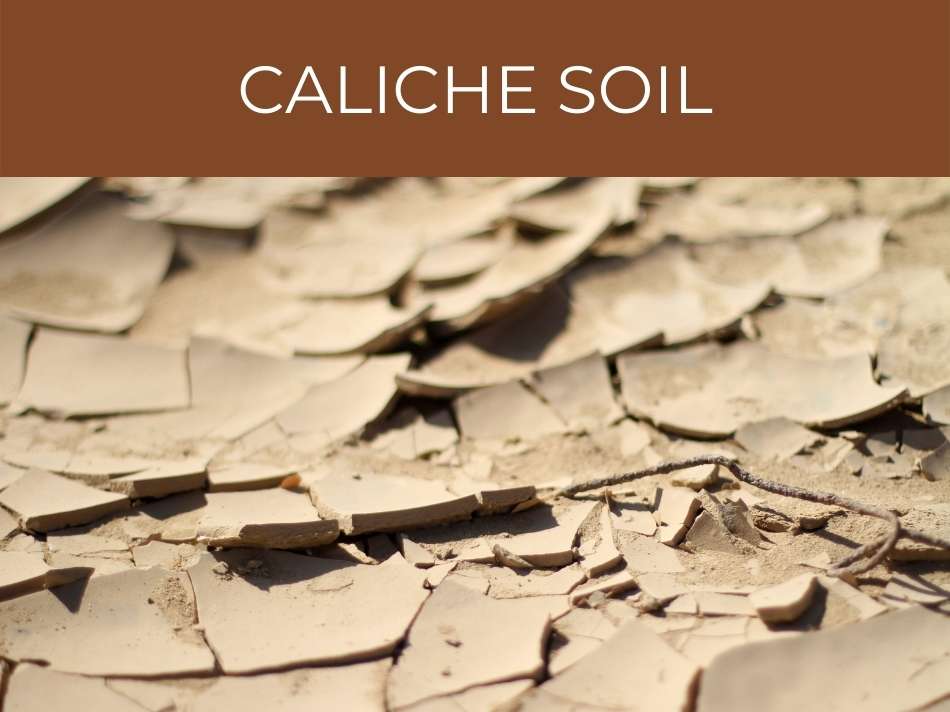
Caliche soil
Caliche soil is typically found in regions that have either arid or semi-arid conditions.
It is common in areas of the US such as Texas, Oklahoma, or other parts of the world such as western Australia, the Khalahari desert, or eastern Saudi Arabia.
Caliche is a thin soil layer that is usually creamy-white or whitish-gray, & can form an extremely hard crust in soil. Carbonates of magnesium and calcium are responsible for cementing this type of soil. Caliche soils make it difficult for plant roots to penetrate deeply.
This soil is often confused with limestone but caliche contains calcium carbonate, which means that it is very different from limestone.
This type of soil limits the growth of plants and crops.
Find out why your soil smells bad and how to fix it.
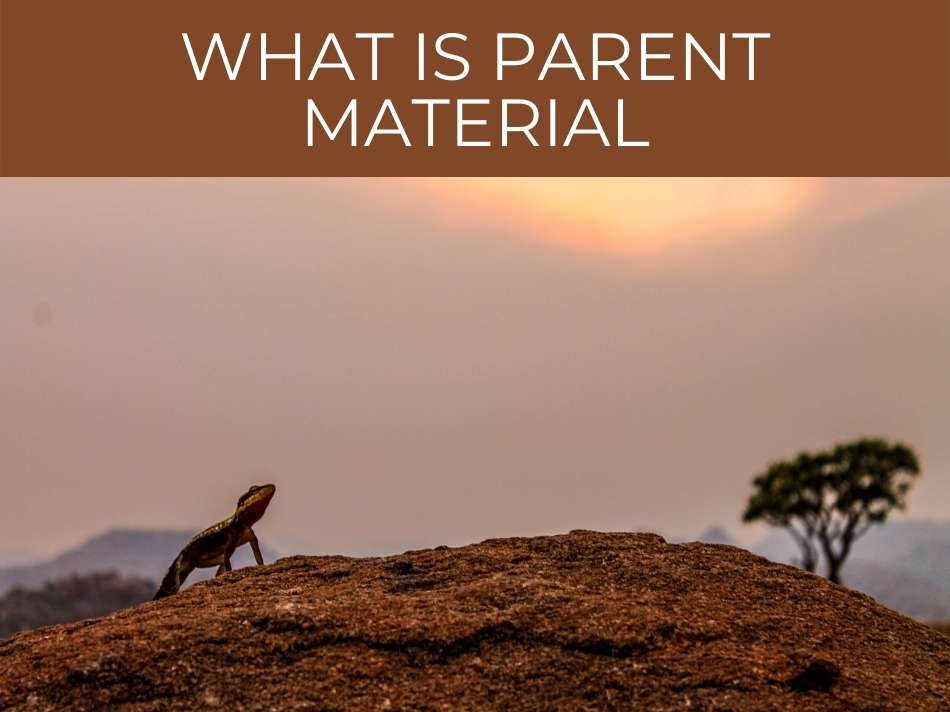
What is parent material
Parent material influences soil formation.
This is due to the texture, mineralogical composition, and stratification in the parent material that help to produce fertile soil.
Parent material is geologic material. It is the material that forms soil horizons. There are 7 types of parent material including outwash deposit, till, weathered bedrock, local overwash, eolian sand, loess, and alluvium. Together, parent materials make up soil.
The starting point for most types of soil formation is parent material.
Soil formation begins when parent material or organic matter is exposed to the environment.

